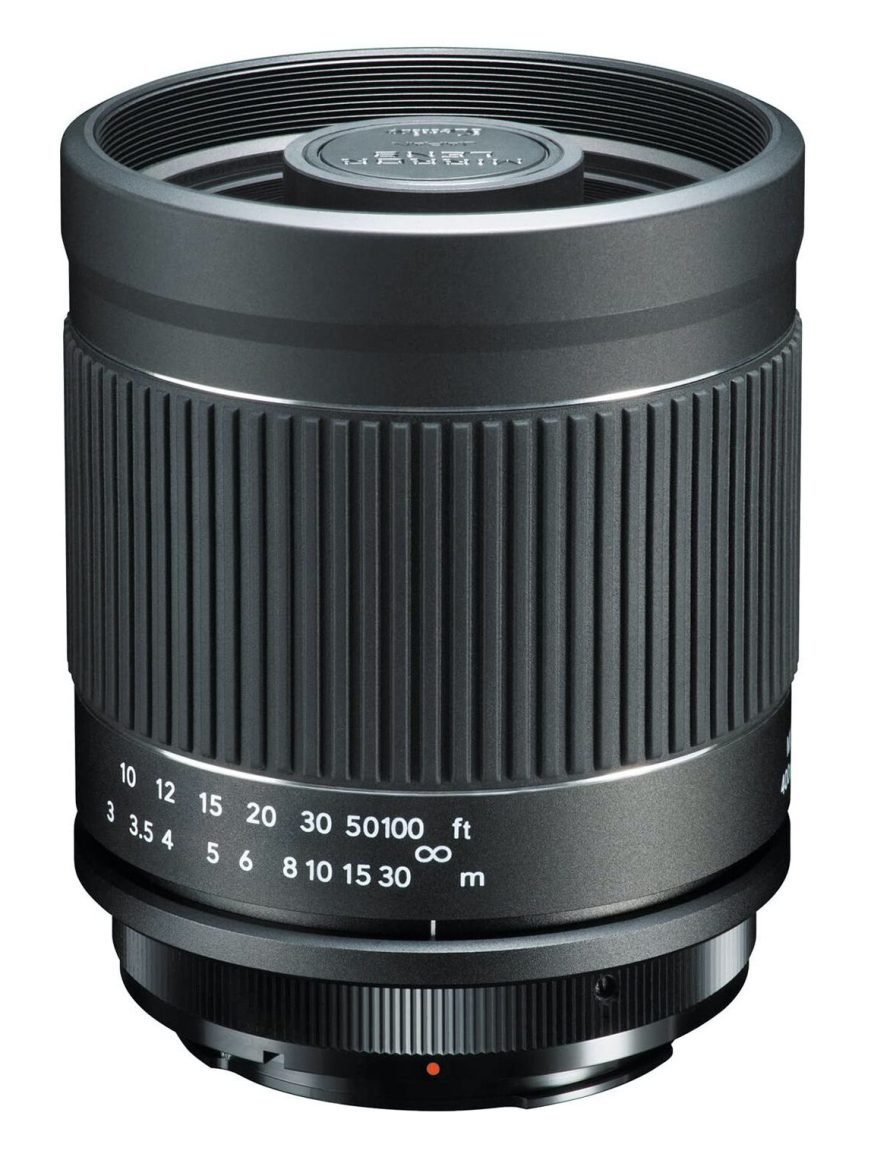Kenko 400mm F/8 Mirror MC N II S
Super telephoto prime lens • Digital era • Discontinued
Abbreviations
| MC | Multi-layer anti-reflection coating is applied to the surfaces of lens elements. This anti-reflection coating increases light transmission, eliminates flare and ghosting, and maintains color consistence among all lens models. |
| II | Second generation. |
Model history (3)
| ■Kenko MIL TOL 400mm F/8 Mirror MC [T] | -- | 6 - 2 | 1.15m | ⌀67 | 2012 ● | |
| ■Kenko 400mm F/8 Mirror MC N II [T] | -- | 6 - 2 | 1.15m | ⌀67 | 2017 ● | |
| ■Kenko 400mm F/8 Mirror MC N II S [T] | -- | 6 - 2 | 1.15m | ⌀67 | 2021 ● | |
Specification
| Optical design: | |
| 35mm full frame | |
| 400mm | |
| F/8 | |
| 6 elements in 2 groups | |
| Interchangeable mount (T) | |
| 6.2° (35mm full frame) | |
| Diaphragm mechanism: | |
Diaphragm type: | Fixed |
Aperture control: | None |
| Focusing: | |
| 1.15m | |
| 1:2.5 | |
Focusing modes: | Manual focus only |
Manual focus control: | Focusing ring |
| Physical characteristics: | |
| 500g | |
| ⌀74×82mm | |
| - | |
| - | |
| Accessories: | |
| Screw-type 67mm | |
| Rear screw-type 30.5mm | |
| KMH-671 - Screw-type round | |
| Kenko 2x Rear Converter → 800mm F/16 |
Source of data
- Manufacturer's technical data.
Typical characteristics of mirror (reflex) lenses
- Catadioptric system consisting of curved mirrors and optical glass;
- Much shorter, lighter and less expensive designs than conventional super telephoto lenses;
- Outstanding correction of chromatic aberrations;
- Since the aperture is fixed, neutral density filters are used to obtain a smaller aperture;
- Doughnut-shaped out-of-focus highlights.
From the editor
According to the manufacturer, this new version of the lens provides improved performance due to suppressed internal reflections in the T-mount part.
The manufacturer indicated different weights and lengths of the lens depending on the type of cameras for which it is intended: mirrorless version (lens + T-mount adapter) weighs 545g and has a length of 112mm while SLR version is 45g lighter (500g) and 30mm shorter (82mm). This suggests that the T-mount adapter for mirrorless cameras also acts as an adapter tube for the SLR optical design (to compensate for the difference between the flange focal distances). But in principle, the same can also be said about the previous variants of this model introduced in 2017 and 2012.
